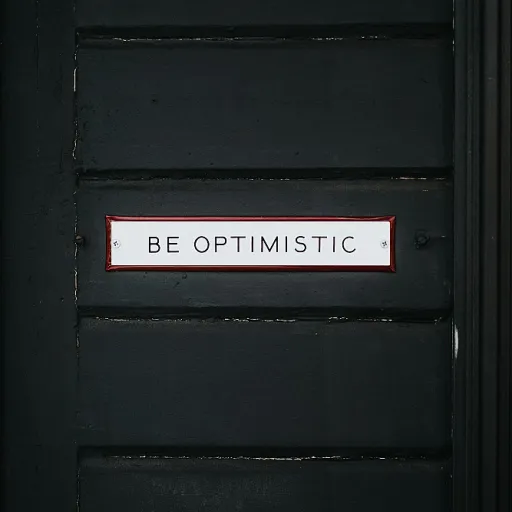
Understanding Employee Engagement
Grasping the Essence of Employee Engagement
Employee engagement is a crucial aspect of any organization aiming to retain top talent and ensure high performance. It involves creating a workplace environment where employees feel motivated, valued, and committed to their roles. Engaged employees are more likely to perform well, contribute positively to the team, and remain with the organization for the long term.
Understanding the dynamics of employee engagement requires a comprehensive analysis of various factors, including job satisfaction, the alignment of tasks with skills, and the overall employee experience. When employees are engaged, they are more likely to excel in their tasks and contribute to the organization's success.
Organizations must pay attention to the job descriptions and ensure they match the skills and abilities of their employees. This alignment helps in maximizing job performance and keeps employees motivated. Hiring managers should focus on making informed hiring decisions by assessing candidates' skills and potential for growth within the organization.
Moreover, providing opportunities for employees to explore career paths can significantly enhance engagement. By offering clear pathways for advancement, organizations can foster a sense of purpose and direction among their team members. For more insights on exploring career paths, you can read about career paths with JA Careers.
In summary, understanding and enhancing employee engagement is a multifaceted process that involves aligning tasks with skills, offering growth opportunities, and ensuring a positive employee experience. This foundation sets the stage for identifying signs of boredom and addressing underutilization, which are crucial for maintaining a motivated and productive workforce.
Identifying Signs of Boredom
Spotting the Signs of Employee Disengagement
In any organization, recognizing when employees are disengaged is crucial for maintaining a productive workplace. Disengagement often manifests as boredom, which can be detrimental to job performance and overall employee retention. Identifying these signs early allows hiring managers and team leaders to take proactive steps in assigning more challenging tasks that align with an employee's skills and abilities.
Here are some key indicators that an employee might be experiencing boredom in their role:
- Decreased Productivity: When employees perform well below their usual standards, it may signal that they are not being challenged enough. A lack of stimulating tasks can lead to a drop in performance.
- Lack of Initiative: Employees who no longer take the initiative or show enthusiasm for new projects might be feeling underutilized. This can impact their ability to contribute effectively to the team.
- Frequent Absences: An increase in absenteeism can be a red flag. Employees who are not engaged with their work are more likely to call in sick or take longer breaks.
- Minimal Engagement in Meetings: If team members are not participating in discussions or offering ideas, it might indicate that they are not invested in their current tasks.
- Expressing Dissatisfaction: Employees who vocalize dissatisfaction with their job or role may be seeking more challenging opportunities to utilize their talents.
Conducting an analysis questionnaire can help in understanding these signs better. By gathering data on employee experiences and job satisfaction, organizations can tailor tasks to better fit the skills and aspirations of their workforce. This approach not only helps in retaining top talent but also enhances the overall employee proposition.
The Impact of Underutilization
The Consequences of Not Fully Utilizing Talent
When employees are not fully engaged in their roles, the impact on both the individual and the organization can be significant. Underutilization of skills can lead to a decline in job satisfaction, which in turn affects overall job performance. Employees who feel their talents are not being used effectively may become disengaged, leading to higher turnover rates and a negative employee experience.
Organizations that fail to recognize and address underutilization risk losing top talent to competitors who offer more challenging and fulfilling roles. This is especially true in a competitive job market where candidates are seeking positions that align with their skills and career aspirations. High-performing employees who are not given opportunities to excel may seek future jobs elsewhere, where their abilities are better appreciated and utilized.
Moreover, the lack of challenging tasks can affect team dynamics. Team members who are not engaged may not collaborate effectively, impacting the overall performance of the team. This can lead to a cycle of poor performance and low morale, further exacerbating retention issues.
To mitigate these risks, organizations should conduct regular assessments of employee roles and responsibilities. This data-driven approach can help identify areas where employees may be underutilized and provide insights into how to better align tasks with their skills and abilities. By doing so, companies can enhance their employee proposition and improve retention rates.
For more insights on how to boost employee retention through effective incentives, consider exploring this resource.
Strategies for Assigning Challenging Tasks
Crafting Opportunities for Growth
Assigning challenging tasks is a strategic move that can significantly enhance employee retention. When employees feel their skills are being utilized and they are contributing meaningfully to the organization, their job satisfaction increases. Here are some strategies to ensure tasks are both challenging and rewarding:
- Conduct Skill Assessments: Regularly evaluate the skills and abilities of your team members. This data-driven approach helps in identifying who is ready for more complex tasks. An analysis questionnaire can be a useful tool in this process.
- Align Tasks with Career Goals: Understanding each employee's career aspirations allows you to assign tasks that align with their future jobs. This not only boosts their job performance but also enhances their overall employee experience.
- Encourage Cross-Departmental Projects: Involving employees in projects outside their usual role can expose them to new skills and perspectives. This not only broadens their skill set but also fosters a more collaborative workplace.
- Offer Training and Development: Providing opportunities for learning new skills ensures employees are well-prepared to tackle challenging tasks. This investment in their growth can lead to high-performing teams.
- Set Clear Expectations: Clearly defined job descriptions and expectations help employees understand what is required to perform well. This clarity can prevent misunderstandings and ensure tasks are completed exceptionally well.
By implementing these strategies, organizations can not only improve job performance but also retain top talent. It's essential to remember that assigning challenging tasks should be a balanced approach, considering both the employee's current abilities and their potential for growth.
Encouraging Open Communication
Fostering a Culture of Open Dialogue
Encouraging open communication in the workplace is crucial for employee retention. When employees feel heard, they are more likely to stay engaged and committed to their roles. Open dialogue allows team members to express their needs, including the desire for more challenging tasks. This can lead to a more dynamic and fulfilling employee experience.
Here are some strategies to promote open communication:
- Regular Check-Ins: Schedule consistent one-on-one meetings to discuss job performance, career aspirations, and any concerns. This helps in identifying if employees feel underutilized or bored.
- Feedback Mechanisms: Implement feedback systems such as surveys or analysis questionnaires. These tools can provide data-driven insights into employee satisfaction and engagement levels.
- Transparent Communication Channels: Ensure that there are clear channels for employees to voice their opinions and suggestions. This could be through digital platforms or open-door policies.
- Encourage Peer Interaction: Facilitate team-building activities that promote collaboration and communication among employees. This can enhance their ability to perform well in their roles.
By fostering a culture where employees feel comfortable sharing their thoughts, organizations can better align tasks with employee skills and aspirations. This not only improves job performance but also helps in retaining top talent. When employees know their voices matter, they are more likely to stay committed to the organization, reducing the need for frequent hiring and training of new job candidates.
Measuring the Impact on Retention
Evaluating the Effectiveness of Challenging Tasks
Once you’ve implemented strategies to assign more challenging tasks, it’s crucial to measure their impact on employee retention. This involves a thorough analysis of various factors that contribute to an employee's decision to stay with your organization. Here’s how you can assess the effectiveness of these initiatives:
- Performance Metrics: Monitor job performance data to see if employees are performing well in their new roles. Are they meeting or exceeding expectations? High performing employees often feel more engaged and valued.
- Feedback and Surveys: Conduct regular feedback sessions and use analysis questionnaires to gauge employee satisfaction. Are employees expressing a sense of fulfillment and challenge in their tasks?
- Turnover Rates: Analyze turnover rates before and after implementing challenging tasks. A decrease in turnover can indicate that employees feel more engaged and less inclined to leave.
- Skill Development: Assess whether employees are developing new skills and abilities. This can be a sign that they are being effectively challenged and are growing within their roles.
- Employee Engagement Scores: Use data-driven tools to measure engagement levels. Higher scores often correlate with a positive employee experience and a reduced likelihood of seeking future jobs elsewhere.
By focusing on these areas, organizations can make informed hiring decisions and improve their employee proposition. This not only helps in retaining top talent but also enhances the overall workplace environment, ensuring that team members are motivated and equipped to excel in their tasks.












